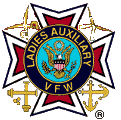

![]()
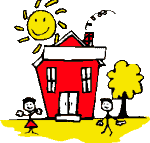 Ever since the VFW National Home was founded in 1925, the Ladies
Auxiliary has loyally given it both financial and moral backing. This makes the Home - a
residential facility in Eaton Rapids, Michigan, for the families of deceased VFW or
Auxiliary members - the oldest of the Auxiliary's ongoing programs.
Ever since the VFW National Home was founded in 1925, the Ladies
Auxiliary has loyally given it both financial and moral backing. This makes the Home - a
residential facility in Eaton Rapids, Michigan, for the families of deceased VFW or
Auxiliary members - the oldest of the Auxiliary's ongoing programs.
The impetus for the founding of the VFW National Home came from Amy Ross, a twenty-three year old Michigan resident. A warm-hearted woman, Amy was concerned not only about the plight of the thousands of children orphaned during World War I, but also about the ragged armies of veterans roaming the streets in search of employment. To Amy, the best solution to both problems was to enlist the jobless veterans in constructing a home for their deceased comrades' children.
The Military Order of the Cootie quickly rallied around Amy's cause. At its 1923 National Convention in Norfolk, Virginia, the Cooties authorized their supreme commander to select a site and investigate the cost of erecting and maintaining a home suitable for veterans' orphans.
Amy's idea continued to simmer on the VFW's back burner until summer 1924. Then, a millionaire cattleman from Michigan presented Dr. Candler with an offer that sounded too good to be true. The cattleman, Corey J. Spencer, had heard about Amy's idea and wanted to give the VFW land on which to establish its national home. He offered the VFW a 472 acre farm near Eaton Rapids, Michigan, known locally as the Grand River Stock Farm. On November 21, 1924, while the VFW committee was still deliberating on whether to accept Mr. Spencer's offer, Amy Ross died. The go-ahead for Amy's "little city" finally came on December 6, 1924, when the National Council of Administration voted to accept Spencer's offer.
Today, the campus of the VFW National Home sprawls across 640 acres. Its 36 cottages house approximately 104 residents, including about 75 boys and girls under the age of 18. Many individual states of the United States support the home by maintaining one or more cottages, or by helping to perform other necessary operations around the Home.
For admission to the Home, the VFW National Home has set only one requirement: "that the child/children of that family must have a parent or grandparent who is a VFW or Ladies Auxiliary member. Admission to the VFW National Home is not contingent upon the ability of any agency, auxiliary, post or parent to provide financial support.
A child, sibling group, or family may be referred to the Home one of four ways: by a VFW or Auxiliary member; by public courts or welfare agencies; by child placement agencies; or by private referrals through church associations or other channels.
After a new resident enters the Home, priority is placed on helping him resume the most normal life possible, as quickly as possible. This is in keeping with the Home's philosophy that each child should be treated, in so far as possible, as if the circumstances surrounding his or her growing up were no different than that of a child in any family. Under the "Natural Parent Plan," children who arrive at the Home with their mother or father continue, if possible, under their care; children who arrive alone are absorbed into a "family," The family may consist of up to ten children living in the same housing unit under the care and supervision of a "House Mother" (child care worker). The House Mother - either the natural parent of children at the Home or someone hired for the position - sees that the children are fed, clean, properly clothed, and that their other needs are attended to. Although children are often assigned to the cottages sponsored by the state from which they have come, they may be assigned to a family unit in any cottage.
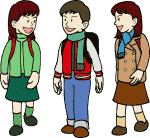 To enhance the Home's family atmosphere, uniforms for the residents
are not allowed. Residents are encouraged to maintain their individuality, and so are free
to dress as they wish. Children are also enrolled in local public schools so that their
association with area children automatically helps integrate them into the community.
To enhance the Home's family atmosphere, uniforms for the residents
are not allowed. Residents are encouraged to maintain their individuality, and so are free
to dress as they wish. Children are also enrolled in local public schools so that their
association with area children automatically helps integrate them into the community.
Individuality is not the only value emphasized at the Home. Children are also encouraged to develop a sense of responsibility, just as they would be in a more traditional family setting. Each child, young or old, is asked to perform two hours of community service every week. These tasks are assigned according to the child's age and ability. As an incentive, hours worked by the children may apply toward the "purchase" of a skateboard, scooter, bicycle, or other desired item. No child is required to obtain an outside job. Allowances for teenagers, however, are deliberately kept low to encourage older children to take jobs to earn additional spending money and to learn good work habits.
Like the children, adult residents and staff also help out around the Home. They are asked to give twenty hours of community service a month. Parents may also be encouraged to arrange for paid employment on or off campus or to further their education at local institutions. This is especially true when it seems possible - and in the best interests of all concerned - for the parent to gain the skills necessary to leave the Home and to provide a normal life for the children.
Although there are no fixed rules as to how long a resident may stay at the Home, the average single-parent family leaves the program after three to five years. For them, their time at the National Home is generally a transitional period during which they prepare themselves for lives outside the Home. Children without parents at the Home usually stay until graduation from high school. There is, however, an after-care program. After graduation, some children live independently on campus for a transitional period or while they attend a community college.
 With the chance in life the National Homes gives them, many graduates
go on to become engineers, lawyers, nurses, farmers, secretaries, homemakers, doctors,
businessmen, or other successful members of their communities. Because of their success -
and the innovative child care methods at the Home that prepare them for success - the
National Home is recognized around the world as an outstanding model of a residential
child care facility.
With the chance in life the National Homes gives them, many graduates
go on to become engineers, lawyers, nurses, farmers, secretaries, homemakers, doctors,
businessmen, or other successful members of their communities. Because of their success -
and the innovative child care methods at the Home that prepare them for success - the
National Home is recognized around the world as an outstanding model of a residential
child care facility.
![]()

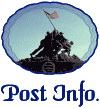

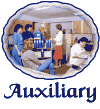
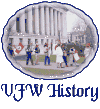
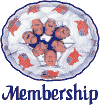
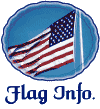
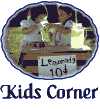

 E-Mail
E-Mail